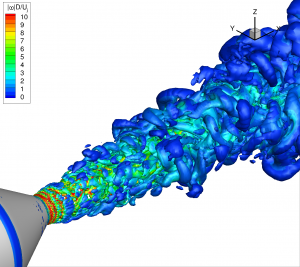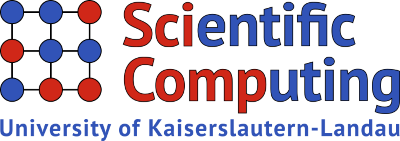Contact: Dr. -Ing. Beckett Y. Zhou, Prof. Dr. Nicolas R. Gauger
Deep Neural Network for Synthetic Turbulence and Stochastic Noise Generation
 Direct application of adjoint method to scale-resolving simulations is known to result in regularization issues due to the chaotic nature of the turbulent flow. To circumvent this problem, it is possible to apply adjoint instead to a coupled system that consists of RANS and a synthetic turbulence generation method such as stochastic noise generation (SNG). In this lower-fidelity model, the turbulent fluctuation is stochastically synthesized using the mean flow quantities extracted from a preceding RANS solution. Despite of its low computational cost, the standard RANS-based SNG method is known to be unreliable for anisotropic flows due to various modeling assumptions. To tackle this challenge, we employ a machine learning technique known as the deep neural network (DNN) to iteratively improve the surrogate representability of SNG, based on training data from high-fidelity scale-resolving simulations such as LES. The updated RANS-SNG model at each design iteration can then be used for adjoint-based design optimization. In an on-going effort, we are testing this approach on a turbulent jet with strong shear layers.
Direct application of adjoint method to scale-resolving simulations is known to result in regularization issues due to the chaotic nature of the turbulent flow. To circumvent this problem, it is possible to apply adjoint instead to a coupled system that consists of RANS and a synthetic turbulence generation method such as stochastic noise generation (SNG). In this lower-fidelity model, the turbulent fluctuation is stochastically synthesized using the mean flow quantities extracted from a preceding RANS solution. Despite of its low computational cost, the standard RANS-based SNG method is known to be unreliable for anisotropic flows due to various modeling assumptions. To tackle this challenge, we employ a machine learning technique known as the deep neural network (DNN) to iteratively improve the surrogate representability of SNG, based on training data from high-fidelity scale-resolving simulations such as LES. The updated RANS-SNG model at each design iteration can then be used for adjoint-based design optimization. In an on-going effort, we are testing this approach on a turbulent jet with strong shear layers.
Project Partners: Jeremiah Hauth and Xun Huan (University of Michigan)
Related Publications:
- B.Y. Zhou, N. R. Gauger, J. Hauth, X. Huan, “Towards a Multi-Fidelity Noise Minimization Framework using Stochastic Noise Generation and Deep Neural Network”, AIAA AVIATION 2020 Forum, Reno, NV, 2020. (Submitted)

